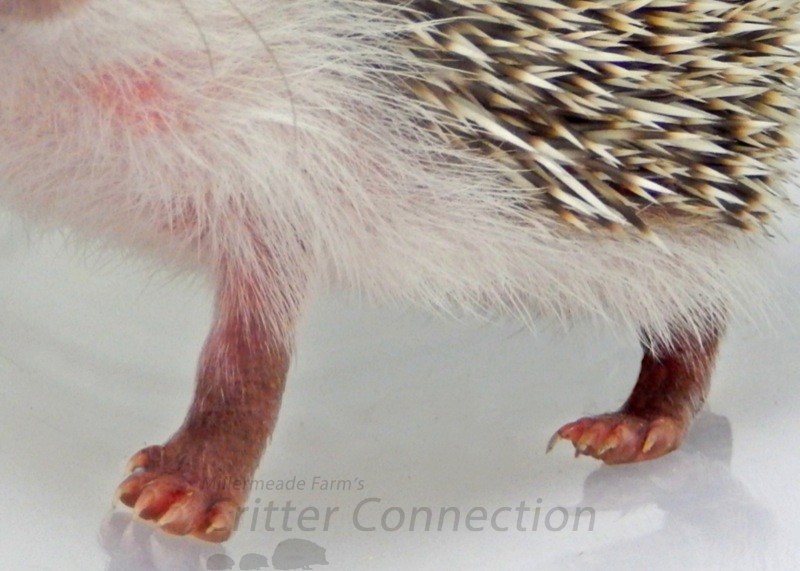Last Updated on November 1, 2022.
- Hedgehogs have 4 toes on the rear feet and 5 toes on the front feet as in the Atelerix species.
- The nails on the front feet may need to be trimmed more frequently than the rear feet to prevent them from curling into the foot and damaging the footpad.
- Hedgehog’s feet and toes are made for walking and running.
- They do not have opposable thumbs or fingers for grasping or for vertical climbing.
Bloody Feet
- Symptom
- Raw sores, scabbed, irritated feet
- Actively bleeding feet
- Cause
- Damaged nails are the most common cause of bloody feet.
- Over-use of a wheel can cause blisters or tiny scrapes on the pads of the feet.
- Some types of wheels have a tendency to cause more irritation than others.
- Treatment
- Feet should be cleaned with warm water and a mild soap to determine if the injury is new or is healing
- Remove all bedding and litter in the cage. Open wounds should be kept on clean paper towels or other non-stick substrate until healed.
- Over-the-counter regular Polysporin (no Maximum Strength or Painkiller versions) can be applied to sore feet to aid in healing.
- No wheel exercise until the injury has healed. Some hedgehogs become highly agitated without the wheel but one night without a wheel will make a significant difference in allowing the feet to heal.
- “Angry red” or pustules indicate a veterinarian visit and possible medication.
- Foot injuries tend to heal quickly without additional trauma.
Loss of Blood Circulation
- Symptom
- Swelling, redness, or change in color
- Necrosis of the entire foot, portions of the foot or toes
- Rotting flesh smell
- Cause and Prevention
- Circulation is cut due to tight wrapping of hair, thread, string, or carpet fibers around the foot or portions of the foot.
- Permanent damage can occur in as little as 6 hours
- Inspect liners, bags, and any other fabric object in the cage daily for loose threads
- Treatment
- The constricting object must be removed immediately and damage must be assessed a veterinarian to determine if amputation is needed
- Necrotic tissue can cause an animal to go septic
- Antibiotics such as Baytril and an anti-inflammatory drug such as Metacam may also be necessary to treat any resulting infection or swelling.
- The constricting object must be removed immediately and damage must be assessed a veterinarian to determine if amputation is needed
Contributors: Gail Smith, Melissa Ramos






